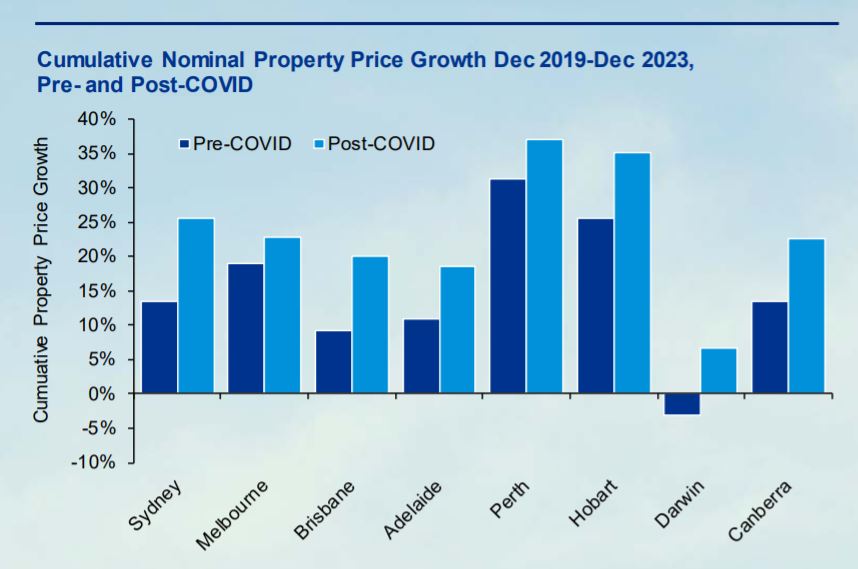Pre-COVID-19, house prices across Australia’s major capital cities were already expected to enter a cyclical upswing in 2020. So, did the pandemic change things for the better? Or for the worse?
Despite the market being highly conducive to strong price growth in the beginning of 2020, the uncertainty associated with COVID-19 saw most markets fall by the end of March.
Over the June 2020 quarter, most capital cities — except Canberra — saw house prices decline by 0.3 of a percentage point to 2.8 per cent.
But as government policy responses and other support schemes, along with the significant decline in mortgage interest rates, revived confidence in the property market, house prices easily recovered — with dramatic value increases becoming widespread over the past six to nine months.
According to KPMG Economics’ new report, Australia’s Residential Market Post-COVID-19, the rises in residential property prices have actually been greater than what would have occurred in a “counterfactual no-COVID scenario”.
“It appears the short-term positive factors of lower mortgage interest rates have swamped the longer-term negative factors of lower population and price disequilibrium during this recent price spike,” the report noted.
Without the pandemic — and thus without the introduction of support schemes such as HomeBuilder and the fall of cash rate down to 0.1 of a percentage point — KPMG estimated that house prices would have risen from 0 to 13 per cent across capital cities by 2023 (from 2019).
Now, post-COVID, capital city house prices are expected to rise by as much as 35 per cent.
Even Darwin, the only capital city where house prices were modelled to fall in a no-COVID scenario, would instead see prices rise between 5 and 10 per cent.

Source: KPMG Economics
However, the unprecedented acceleration of dwelling prices may not be sustainable over the long term.
According to the report, price growth is likely to be more subdued over the next two to three years as the market reverts back to equilibrium.
KPMG said this moderation in house price growth will be driven largely by lower population growth — with Australia’s population now expected to be lower by about 1 million people by the end of the decade compared with pre-pandemic forecasts — and higher mortgage lending rates.
Supply will play a role, too, with house and unit stocks in the bigger states of New South Wales and Victoria expected to be 20,000 and 25,000 lower than they would have been in the absence of COVID-19, respectively.
Interestingly, Queensland and Western Australia are likely to buck the trend with higher dwelling stocks driven by several factors, including positive net interstate migration.
“Over the longer term, real house prices in Australia have a tendency to revert back to equilibrium levels consistent with underlying demand and supply factors,” the report highlighted.
“This tendency means that as property prices get further away from the underlying equilibrium level, there is a build-up of pressure for the market to cool down if prices are above the long-run equilibrium level and vice versa if prices are below the equilibrium level.
“Our analysis suggests that the recent spike has moved house prices further away from the estimated equilibrium price levels. Our expectation is that this disequilibrium will start to contract.”
Between 2023 and 2024, KPMG expects a downward pressure on prices as the positive impacts on prices of the shorter-term factors — low interest rates and government assistance — weaken over time.
Still, despite the anticipated moderation of property price growth, the report found that house prices could still be between 4 per cent and 12 per cent higher than would have been the case in the absence of COVID-19.
Unit values, meanwhile, are expected to be between 0 and 13 per cent higher than they would have been in a no-COVID scenario.









You are not authorised to post comments.
Comments will undergo moderation before they get published.